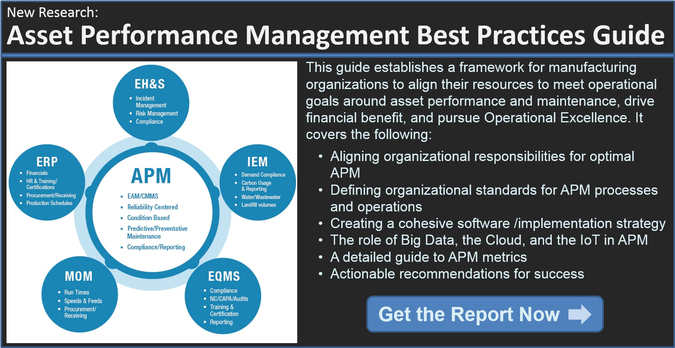At LNS Research we've been blogging plenty of late on the important of the Internet of Things (IoT) and the industrial extension, the IIoT. We clearly see the IIoT as being one of the key enabling technologies of Smart Connected Operations and Smart Connected Assets. In response to my April 3rd blog post an old associate emailed me asking where the market size number came from since he had seen a Forbes article claiming the IoT market would be almost $ trillion by 2020 or slightly later.
At the same time there have been several articles about the number of devices having IoT connectivity which, coincidentally, will be in the 20 billion range by 2020. My number in the April 3rd post was based on figures I had seen regarding the core or enabling IoT/IIoT technology market size; not the value of the enabled devices, the infrastructure to support them, or the global market for consumer handheld devices. So it seems pretty obvious there are a number of ways to size the market for IoT/IIoT. The big question is though, should end users even care what the number is?
What Is a Market?
The first challenge in understanding what market size numbers are is defining what you mean by "market." Clayton Christensen has published a lot about markets, disruption of those markets, and innovation, and has observed that a market is where a group of buyers with common needs and interests group together to purchase solutions that fulfill those needs, establishing a demand and pricing model to which suppliers adapt and deliver against. There are multiple ways to measure a market as well. There is the production value of the market, that is: the price the producer charges the wholesaler, the wholesale market based on the price the retailer charges, and the retail market size, which is the aggregate value that retailers charge the end consumers.
So, understanding market size requires both a definition of what exactly you mean by the market size as well as at what level you are measuring it. For the Forbes number, which is the total value, it's easy to see how to get to trillions of dollars when essentially every smart connected device is included--from a $30 pedometer to a $500 million jumbo jet. Using this line of reasoning, 20 billion devices with an aggregate value of $2 trillion isn’t unreasonable. Clearly, the companies that create the IoT core technology and software care about these numbers since it helps them understand demand and pricing, but should end users?
End Users Shouldn’t Worry About Market Size – Focus on Adoption Rate
While market size certainly impacts the number of companies serving it, and therefore the pricing of goods and services (which does ultimately impact end users) end users shouldn't place too much focus on the ultimate size of the market. Instead, end users would be better served to focus on how the market will grow and the adoption rates within the market. LNS Research’s data shows that currently adoption rates of “the IoT” are relatively low with almost half the companies still struggling to figure out what they should be doing vis-à-vis the IIoT, and with no plans for investment.

At the same time many of these companies have projects to improve their Asset Performance Management (APM) using condition-based maintenance (CBM) and reliability centered maintenance (RCM) technologies that utilize what is fundamentally IIoT to receive real-time condition/performance information. Others are investing in new control and Manufacturing Operations Management (MOM) systems that also leverage Smart Connected Devices without saying they are investing in the IIoT.
This leads us to conclude that there remains a lot of confusion still in the market as to what defines the IIoT, why companies need to invest in smart connected devices, and how they can then leverage the increased information they get from those devices in their pursuit of Operation Excellence. We know that operational excellence is a key business objective. Data from our APM end-user survey tells us the number one strategic reason for pursuing APM is to improve operations. It is also the highest ranked secondary reason. Clearly, end users need to shift their thinking to the timing for IIoT investment around enabling Smart Connected Devices and shut out the hype about market size.
